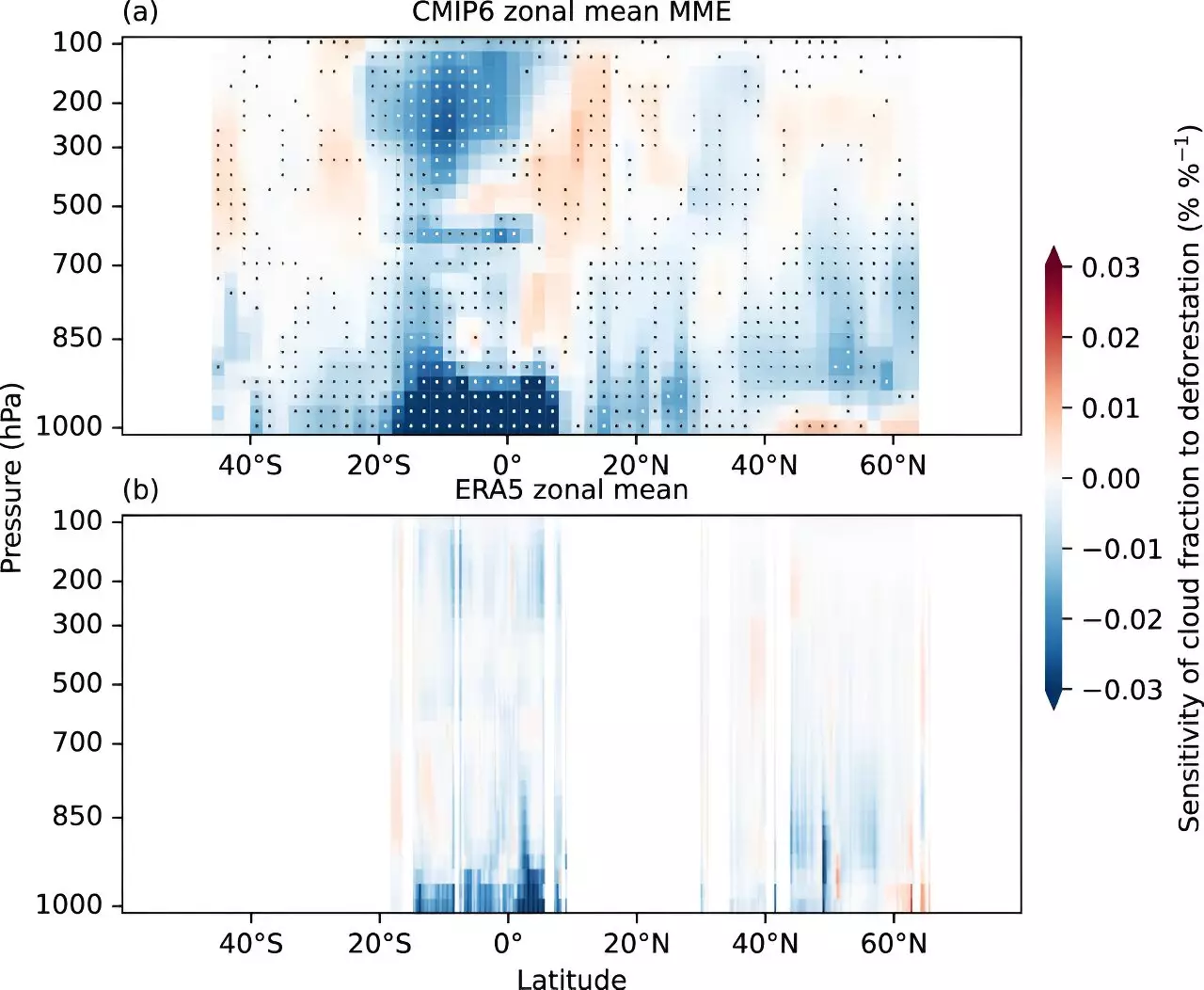Recent studies have illuminated the intricate relationship between deforestation and climate change,
revealing unexpected consequences that extend far beyond mere carbon emissions. Researchers from iDiv, Leipzig University, and Sun Yat-sen University have uncovered alarming findings that indicate large-scale deforestation has a considerably stronger warming effect on the planet than previously acknowledged. This article delves into their groundbreaking research and its implications for our understanding of climate systems.
One of the pivotal revelations of the study involves the significant reduction in cloud cover following deforestation. More specifically, the research highlights declines in both global low-level clouds and tropical high-level clouds in regions where forests have been cleared. Traditionally, forests are known to play a cooling role in the Earth’s climate due to their ability to capture and store carbon dioxide. However, their darker surfaces also lead to a phenomenon known as albedo effect, which refers to the amount of sunlight reflected back into space. When forests are removed, the increased albedo of the lighter ground results in greater solar absorption, consequently amplifying warming.
Lead author Dr. Hao Luo emphasizes the crucial nature of these findings, explaining that diminished cloud cover nearly eliminates the natural cooling effects that low-level clouds typically provide. These clouds serve an essential function by reflecting substantial amounts of sunlight away from the Earth, which is now compromised due to changes in land use initiated by deforestation.
The researchers employed a combination of computer simulations and observational data to support their findings, focusing on how deforestation initiates complex alterations in meteorological patterns. As Professor Johannes Quaas points out, the processes governing cloud production are deeply interconnected with surface heat fluxes and moisture. In deforested areas, changes in these factors lead to a reduced capacity for uplifting air, which is fundamental for cloud formation. The loss of moisture further exacerbates the situation, leaving a significant gap in our understanding of the ecological and climatological balance.
Despite these insights, the researchers underscore a substantial knowledge gap in studying how deforestation interacts with cloud formation and radiative balance. The intricate role of forest biodiversity, in particular, is an area ripe for further investigation. It is evident that the connection between biodiversity and climate dynamics is complex, and neglecting these relationships could hinder effective environmental policy-making.
The Call for Action
Given the profound implications of these findings, it is crucial for policymakers, researchers, and conservationists to reassess their strategies concerning forest management and environmental conservation. The recent research underscores the urgent need for a holistic approach to tackling climate change, one that goes beyond simply addressing carbon emissions. Protecting and restoring forests must be viewed as a multifaceted solution that includes acknowledging their role in cloud dynamics and overall climate regulation.
This groundbreaking study serves as a clarion call to understand the broader ramifications of deforestation. The loss of forests impacts not only local ecosystems but also the global climate system. Therefore, it is imperative that we prioritize sustainable practices and invest in further research to unravel the complexities of our planet’s climate dynamics. Only through comprehensive understanding and proactive measures can we hope to mitigate the warming effects of deforestation and protect our shared environment for future generations.


Leave a Reply